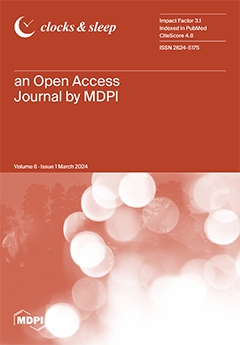Open AccessArticle
Sleep Efficiency and Sleep Onset Latency in One Saskatchewan First Nation
by
Chandima P. Karunanayake, Punam Pahwa, Shelley Kirychuk, Mark Fenton, Vivian R. Ramsden, Jeremy Seeseequasis, Warren Seesequasis, Robert Skomro, Donna C. Rennie, Kathleen McMullin, Brooke P. Russell, Niels Koehncke, Sylvia Abonyi, Malcolm King and James A. Dosman
Viewed by 1643
Abstract
Background: Sleep efficiency and sleep onset latency are two measures that can be used to assess sleep quality. Factors that are related to sleep quality include age, sex, sociodemographic factors, and physical and mental health status. This study examines factors related to sleep
[...] Read more.
Background: Sleep efficiency and sleep onset latency are two measures that can be used to assess sleep quality. Factors that are related to sleep quality include age, sex, sociodemographic factors, and physical and mental health status. This study examines factors related to sleep efficiency and sleep onset latency in one First Nation in Saskatchewan, Canada. Methods: A baseline survey of the First Nations Sleep Health project was completed between 2018 and 2019 in collaboration with two Cree First Nations. One-night actigraphy evaluations were completed within one of the two First Nations. Objective actigraphy evaluations included sleep efficiency and sleep onset latency. A total of 167 individuals participated, and of these, 156 observations were available for analysis. Statistical analysis was conducted using logistic and linear regression models. Results: More females (61%) than males participated in the actigraphy study, with the mean age being higher for females (39.6 years) than males (35.0 years). The mean sleep efficiency was 83.38%, and the mean sleep onset latency was 20.74 (SD = 27.25) minutes. Age, chronic pain, ever having high blood pressure, and smoking inside the house were associated with an increased risk of poor sleep efficiency in the multiple logistic regression model. Age, chronic pain, ever having anxiety, heart-related illness, and smoking inside the house were associated with longer sleep onset latency in the multiple linear regression model. Conclusions: Sleep efficiency and sleep onset latency were associated with physical and environmental factors in this First Nation.
Full article






